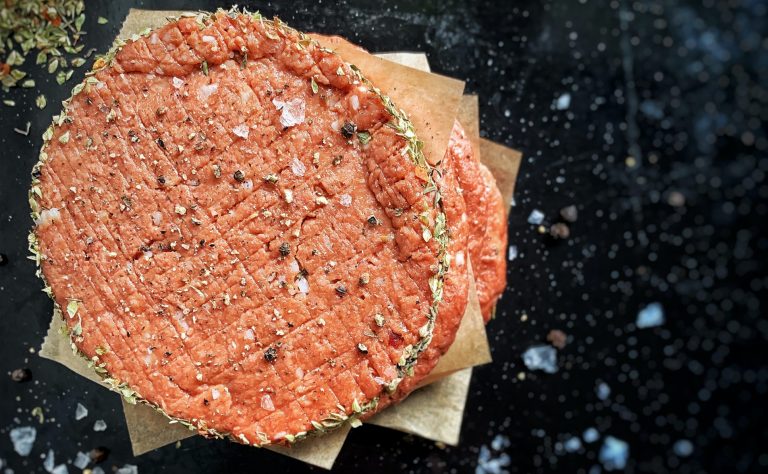Meat substitutes are still tricky to market to consumers despite pandemic growth, Concordia paper finds

The plant-based/meat alternative market has been growing for years, but it was during the pandemic that its profile soared. Meat substitutes remain relatively niche products, however. So how can its proponents break through to consumers?
Caroline Roux, associate professor of marketing at the John Molson School of Business, and Daniella Sucapane (MSc 20) recently published a paper on the topic in the journal Appetite. In it, they argue that a particular combination of product descriptors and packaging colours can appeal to the flexitarian consumer — those who lean toward vegetarianism but who still enjoy the odd meat-based meal. But there are lessons marketers should heed when it comes to this particular industry.
Along with fellow assistant professor of marketing Kamila Sobol, the researchers conducted two studies that looked at how descriptors and colours affected consumer behaviour. In the first, they tested how they responded to the terms “plant-based” and “meat alternative,” two common industry descriptors. In the second, they looked at how packaging colours affected consumers’ perceptions and behavioural intentions.
 Daniella Sucapane and Caroline Roux: “Certain cues can unknowingly sway perceptions of different products.”
Daniella Sucapane and Caroline Roux: “Certain cues can unknowingly sway perceptions of different products.”
Meanings to digest
For study 1, the researchers looked at how the terms “plant-based” and “meat alternative” affected perceptions of a product’s healthiness, eco-friendliness, ethicality, expected enjoyment and satiety (how satisfied they would feel after eating it), as well as their likelihood to try it and how much of it they would eat. They recruited 148 participants for a five-minute online study, excluding vegetarians and vegans, since research has shown that they can react negatively toward meat-based cues.
The participants were randomly assigned to one of two groups. Each group was given almost identical descriptions of a pea-protein patty made by the Canadian company Lightlife, except that the product was described as “plant-based ground” for one group and “meat alternative ground” for the other. Front-of-package labelling identified each as either “Made from plants” or “Meat made from plants” respectively. The packaging’s colour was changed from the usual red to the more neutral brown. Participants were then asked to rate the products on a variety of scales from one to seven.
“Participants said that they felt that the plant-based product was healthier and more environmentally friendly than the meat alternative,” Sucapane says. They also indicated they were more likely to try plant-based food but that they would eat less of it. They did not find effects regarding ethicality, enjoyment or satiety.
Study 2 tested whether product packaging colour affected the results found in study 1. The researchers wanted to see how participants would evaluate a product with green packaging — a colour closely associated with eco-friendliness and healthy living — and one with red packaging, which is more evocative of meat and tastiness.
Using the same evaluation method, a new set of participants was assigned to one of four experimental conditions. Two were “matched” with “green-plant based” and “red-meat alternative,” while two others were “mis-matched” with “red-plant based” and “green-meat alternative.”
The results were surprising, according to the researchers. They found that the participants were more likely to consider the matching red-meat alternative more eco-friendly than the mis-matching green-meat alternative, and increased trial likelihood. The matching green-plant based descriptor was associated with decreased anticipated feelings of satiety. No effects were found on perceptions about health, ethicality or expected enjoyment.
An evolving marketplace
“You really got the idea that adding colour adds another layer of complexity to simply using terms like plant-based or meat alternative,” says Roux, Concordia University Research Chair in Psychology of Resource Scarcity.
She explains that the study can be used as a word of caution to marketers, who may not fully appreciate the consequences of adding particular colours to particular product descriptors, especially in new markets like meat substitutes.
“It is a category that is still being transformed and trying to find its space in the retail environment,” she adds. “Sometimes it is found alongside products like tofu or veggie burgers, the traditional first generation of meat substitutes. In other cases, you will find it in the meat section. These are very different reference points that marketers should consider, as certain cues can unknowingly sway perceptions of different products.”
Read the cited paper: “Exploring how product descriptors and packaging colors impact consumers’ perceptions of plant-based meat alternative products.”


